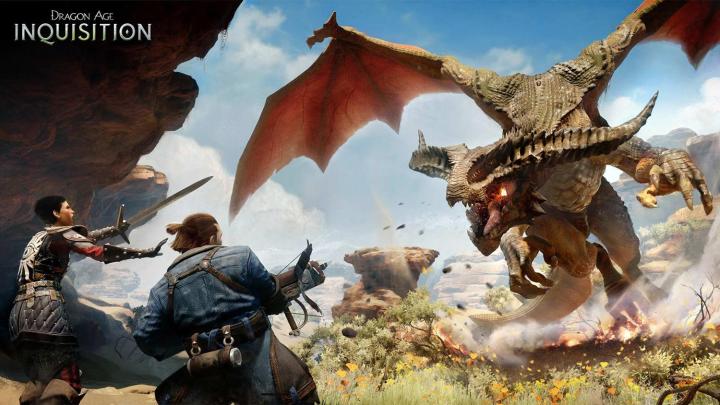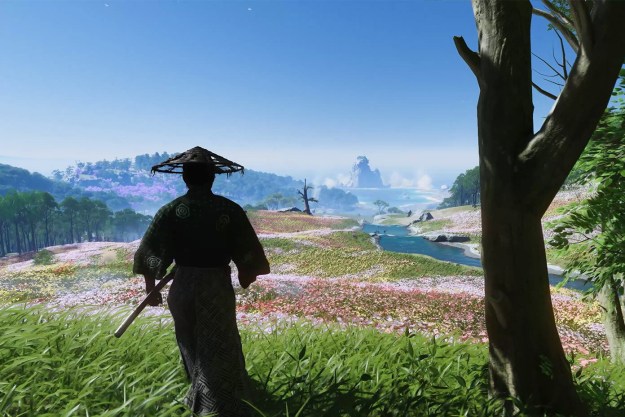Dragon Age: Inquisition isn’t just a new direction for a popular franchise; it points to a new era for developer BioWare as well. For almost 30 years, the studio’s built up a huge base of fans around a particular type of RPG. The style’s evolved in various ways, but it’s become increasingly evident in recent releases that a change was needed. Mass Effect 3 drew fire in 2012 for capping off its trilogy-length journey with an overly rigid story. Dragon Age 2 was panned for recycling environments in a way that made the game just feel overly padded. In a time when many story-focused developers are finding ways to let gamers write their own stories, the studio’s once-fresh style started to feel stale.
It doesn’t take much to get a feel for how Dragon Age: Inquisition forges ahead in a new direction. Spend less than an hour tooling around and you’ll see a multi-region open world whose every square inch brims with character. You’ll see a battle system that offers both reflexive action and thoughtful tactics. You’ll see a story that bends and flexes around the titular inquisition that you preside over. The BioWare DNA is still evident in a variety of ways, but there’s something that feels immediately fresh about this latest Dragon Age when you first pick up the controller, as we learned during our recent (and first) hands-on sitdown.
Story/Concept
World at war. Thedas is in chaos. The Mages and Templars are at one another’s throats. The great nations of the land are at war. Dragons circle high in the sky, raining fire down on hapless victims. Looming over all is the Breach, a break in the fabric of the Veil that separates physical reality from the Fade, a metaphysical region that is equal parts dreamscape and afterlife.
As the Inquisitor, it’s your job to lead the forces of order across the land as you seek out the root of this strife and put a stop to it.
Nobody expects the Inquisition. There’s no single path through the Inquisition. Players are free to explore Thedas, expand their influence, and direct forces as they please. All of this plays out from the War Table, where you sit with advisors and issue orders out to troops, ambassadors, and spies. This is where you push the story forward, but not in a traditionally scripted way. The plot shapes itself around the decisions you make here, which is one of the reasons why Dragon Age: Inquisition features upwards of 40 different endings.
In our demo, the Inquisitor heads off on a mission to Redcliffe Castle, which has become a seat of power for the Mages order in their war against the Templars. We’re here to help out Dorian, a Mage hailing from the Tevinter Imperium who joins the Inquisition in the hopes of bringing about a cultural change in his homeland’s Magocracy. Your fight through the stone keep’s halls is just one way this scenario could play out; it’s an operation that is selected and put in motion via the War Table.
Gameplay
Front-line infantry. The action-driven combat at the center of Dragon Age II is back in Inquisition, with some notable changes. Combat feels similarly swift in a way that divorces the action from the stats-focused RPG system that sits below the surface, and it’s further enhanced by a customizable array of cooldown-managed abilities that you assign to face buttons. You can have up to eight abilities accessible at any given time in addition to your character’s standard attack. Four assigned to the X, B, Y, and RB buttons (on an Xbox controller; A is reserved for jumping), and then four others on those same buttons when you hold down the Left Trigger.
Dragon Age: Inquisition doesn’t restrict players to fighting as the Inquisitor. It’s possible to assume direct control of anyone in your party, cycling between them using up/down on the D-pad, and each one controls in roughly the same way. Class dictates tactics, so you’ll usually want to rush in when you’re steering a fighter and hang further back as mages and rogues. It’s a welcome compromise in this class-driven RPG; you might choose to build your Inquisitor as a Mage, but you’ll still be able to check out the other classes firsthand.
Fantasy tactics. For those who prefer to tackle combat in a more strategic manner, players have the option of pausing the action at any time by pressing the Back button (Xbox 360 controller). This switches to a tactical view, with a free-roam camera that centers on a targeting reticule. You issue orders to each party member by selecting the desired character, moving the reticule to your chosen target, and selecting whichever action you want to queue up (only one at a time, but characters auto-move to act out the order, if necessary). Pressing the Back button again reverts to real time as each order plays out; you can also hold down the RT to move time forward without switching out of tactical view.
There’s no requirement that you stick to either combat system; this is simply another option. You might stick with real-time action for a brief battle against a small group of minor enemies, but then switch to the tactical view to more effectively micromanage during a showdown with a dragon, since you might want to have everyone focus fire on individual legs, the better to cripple it more quickly. All combat in Dragon Age: Inquisition unfolds in the same spaces that you’re exploring, so it’s an easy, seamless jump between the two systems.
Presentation
This land is your land. Even just a brief romp in one of the 10 open world “regions” featured in Inquisition makes it apparent that BioWare took the criticisms of Dragon Age II‘s oft-recycled environments to heart. It feels like each individual chunk of the world was hand-designed. Ferelden’s Hinterlands (the demo’s setting) is a region of rolling hills and thundering waterfalls that sprawls across an impressively massive area. One has to wonder what the load times between regions are going to look like, particularly in the PlayStation 3/Xbox 360 versions of the game, but the sheer amount of space there is to explore is dizzying.

It’s beautiful too. BioWare’s switch to DICE’s Frostbite 3 engine — the same one that powers Battlefield 4 — seems to have been the right move. The environments benefit, not just from more convincing visual effects (water is a standout), but from the level of details overall. The world feels alive (at least in the Hinterlands), with a functioning animal ecosystem and small hints of civilization scattered all throughout. Fans of Skyrim know this feeling well, the experience of cresting a hill, seeing something interesting on the horizon, and investigating. That’s a reality in Dragon Age: Inquisition, and the game’s world feels more faithfully realized as a result.
Takeaway
BioWare fans who were put off of Dragon Age after the faults of the second game, take heart. Dragon Age: Inquisition is something entirely different. There’s still a lot more to see in terms of how the game’s various systems fit together, but the scope and overall ambition here far exceeds anything that either of the previous games managed to pull off. We likely won’t be seeing a whole lot more in the coming months, but launch is thankfully not far off. Dragon Age: Inquisition comes to PC and PlayStation/Xbox consoles on October 7, 2014.
Editors' Recommendations
- Dragon Age: Dreadwolf: release date speculation, trailers, gameplay, and more
- Dragon Age: Dreadwolf doesn’t seem to be coming out this year
- Dragon Age 4 now officially titled Dragon Age: Dreadwolf
- Dragon Age 4 will reportedly be next-gen exclusive
- EA opens all of its accessibility patents, including Apex Legends’ ping system







